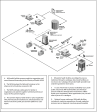Challenges in maintaining medicine quality while aiming for universal health coverage: a qualitative analysis from Indonesia
- PMID: 34049935
- PMCID: PMC8166595
- DOI: 10.1136/bmjgh-2020-003663
Challenges in maintaining medicine quality while aiming for universal health coverage: a qualitative analysis from Indonesia
Abstract
Introduction: Indonesia, the world's fourth most populous nation, is close to achieving universal health coverage (UHC). A widely-publicised falsified vaccine case in 2016, coupled with a significant financial deficit in the national insurance system, has contributed to concern that the rapid scale-up of UHC might undermine medicine quality. We investigated the political and economic factors that drive production and trade of poor-quality medicines in Indonesia.
Methods: We reviewed academic publications, government regulations, technical agency documents and news reports to develop a semi-structured questionnaire. We interviewed healthcare providers, policy-makers, medicine regulators, pharmaceutical manufacturers, patients and academics (n=31). We included those with in-depth knowledge about the falsified vaccine case or the pharmaceutical business, medicine regulation, prescribing practice and the implementation of UHC. We coded data using NVivo software and analysed by constant comparative method.
Results: The scale-up of UHC has cut revenues for physicians and pharmaceutical manufacturers. In the vaccine case, free, quality-assured vaccines were available but some physicians, seeking extra revenue, promoted expensive alternatives. Taking advantage of poor governance in private hospitals, they purchased cut-price 'vaccines' from freelance salespeople.A single-winner public procurement system which does not explicitly consider quality has slashed the price paid for covered medicines. Trade, industrial and religious policies simultaneously increased production costs, pressuring profit margins for manufacturers and distributors. They reacted by cutting costs (potentially threatening quality) or by market withdrawal (leading to shortages which provide a market for falsifiers). Shortages and physician-promoted irrational demand push patients to buy medicines in unregulated channels, increasing exposure to falsified medicines.
Conclusion: Market factors, including political pressure to reduce medicine prices and healthcare provider incentives, can drive markets for substandard and falsified medicines. To protect progress towards UHC, policy-makers must consider the potential impact on medicine quality when formulating rules governing health financing, procurement, taxation and industry.
Keywords: health insurance; health policy; health systems; public health; qualitative study.
© Author(s) (or their employer(s)) 2020. Re-use permitted under CC BY. Published by BMJ.
Conflict of interest statement
Competing interests: AH is a recipient of a 2-year research fellowship, supported by the United States Pharmacopeial Convention (USP) Quality Institute for subsequent research based on this submitted work.
Figures
Similar articles
-
Identifying market risk for substandard and falsified medicines: an analytic framework based on qualitative research in China, Indonesia, Turkey and Romania.Wellcome Open Res. 2019 Apr 16;4:70. doi: 10.12688/wellcomeopenres.15236.1. eCollection 2019. Wellcome Open Res. 2019. PMID: 31131333 Free PMC article.
-
Understanding the impacts of NPM and proposed solutions to the healthcare system reforms in Indonesia: the case of BPJS.Health Policy Plan. 2020 Apr 1;35(3):346-353. doi: 10.1093/heapol/czz165. Health Policy Plan. 2020. PMID: 31965166
-
Indonesia's road to universal health coverage: a political journey.Health Policy Plan. 2017 Mar 1;32(2):267-276. doi: 10.1093/heapol/czw120. Health Policy Plan. 2017. PMID: 28207049 Free PMC article.
-
Why falsified medicines reach patients: an analysis of political and economic factors in Romania.BMJ Glob Health. 2023 Feb;6(Suppl 3):e009918. doi: 10.1136/bmjgh-2022-009918. BMJ Glob Health. 2023. PMID: 36731920 Free PMC article. Review.
-
Tackling the blind spot of poor-quality medicines in Universal Health Coverage.J Pharm Policy Pract. 2020 May 11;13:40. doi: 10.1186/s40545-020-00208-4. eCollection 2020. J Pharm Policy Pract. 2020. PMID: 32670594 Free PMC article. Review.
Cited by
-
Is Indonesia achieving universal health coverage? Secondary analysis of national data on insurance coverage, health spending and service availability.BMJ Open. 2021 Oct 4;11(10):e050565. doi: 10.1136/bmjopen-2021-050565. BMJ Open. 2021. PMID: 34607864 Free PMC article.
-
Assessing the quality of amoxicillin in the private market in Indonesia: a cross-sectional survey exploring product variety, market volume and price factors.BMJ Open. 2025 Jul 22;15(7):e093785. doi: 10.1136/bmjopen-2024-093785. BMJ Open. 2025. PMID: 40701591 Free PMC article.
-
Substandard and Falsified Medicines: Proposed Methods for Case Finding and Sentinel Surveillance.JMIR Public Health Surveill. 2021 Aug 16;7(8):e29309. doi: 10.2196/29309. JMIR Public Health Surveill. 2021. PMID: 34181563 Free PMC article.
-
Variation in Price of Cardiovascular and Diabetes Medicine in Indonesia, and Relationship with Quality: A Mixed Methods Study in East Java.Am J Trop Med Hyg. 2023 May 9;108(6):1287-1299. doi: 10.4269/ajtmh.22-0692. Print 2023 Jun 7. Am J Trop Med Hyg. 2023. PMID: 37160275 Free PMC article.
-
Managing medicines in decentralization: discrepancies between national policies and local practices in primary healthcare settings in Indonesia.Health Policy Plan. 2025 Mar 7;40(3):346-357. doi: 10.1093/heapol/czae114. Health Policy Plan. 2025. PMID: 39576064 Free PMC article.
References
-
- World Health Organization . A study on the public health and socioeconomic impact of substandard and falsified medical products. Geneva: WHO, 2017. http://who.int/medicines/regulation/ssffc/publications/Layout-SEstudy-WE...
-
- Buckley GJB, Gostin LO. Countering the problem of falsified and substandard drugs: committee on understanding the global public health implications of substandard, falsified, and counterfeit medical products. Washington, D.C: National Academies Press, Institute of Medicine of the National Academies, 2013. - PubMed
-
- Pisani E. Antimicrobial resistance: what does medicine quality have to do with it? London: Antimicrobial Review, 2015. http://amr-review.org/sites/default/files/ElizabethPisaniMedicinesQualit...
-
- World Health Organization . WHO global surveillance and monitoring system for substandard and falsified medical products. Geneva, Switzerland: WHO, 2017. http://www.who.int/medicines/regulation/ssffc/publications/GSMS_Report.pdf. (accessed 8 Dec 2017).
Publication types
MeSH terms
Grants and funding
LinkOut - more resources
Full Text Sources
Other Literature Sources

